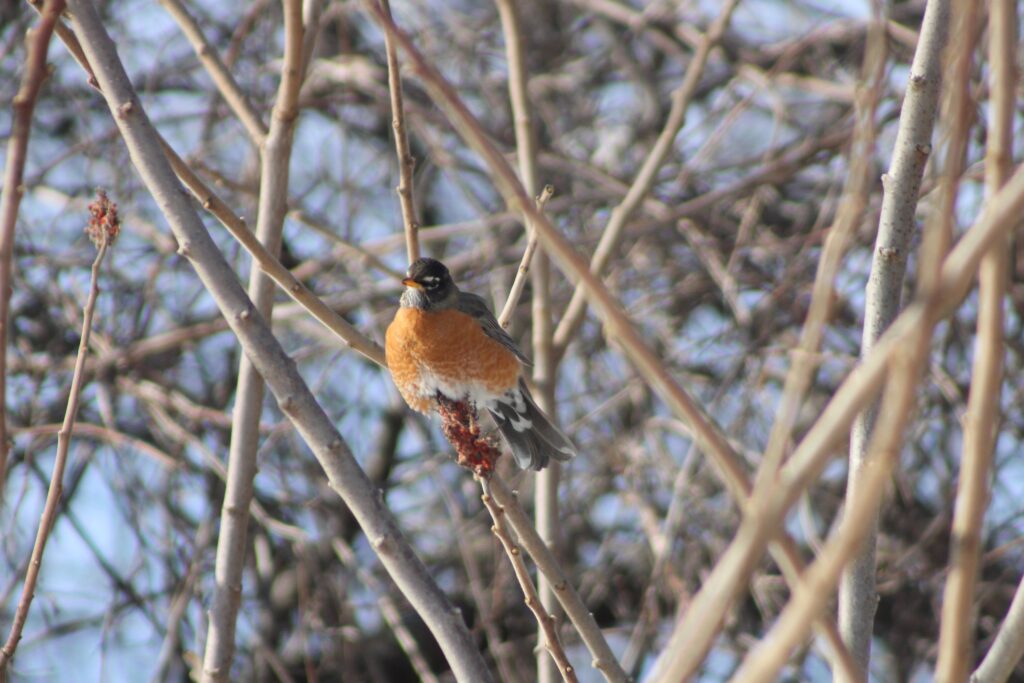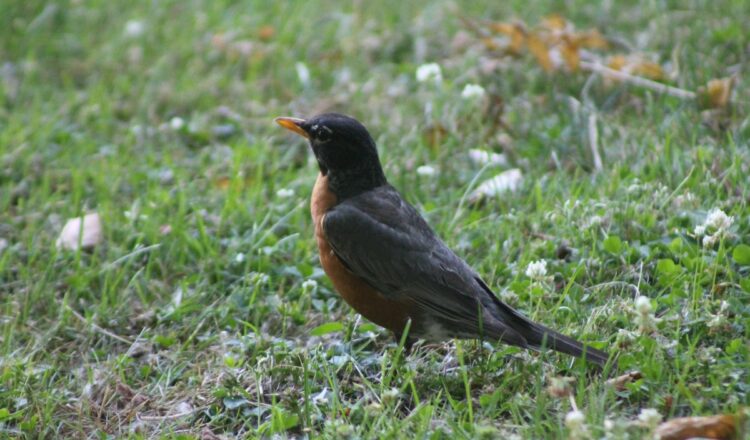By Bob Confer
In the middle of last winter, I returned home following another one of those miserable, sloppy and incredibly slow commutes that had become a little too common. As I got out of the truck I was immediately greeted by the calls of robins. Not one. Not two. But two dozen!
Yes, two dozen of these so-called “signs of spring” were looking down upon me and no doubt laughing.
Touche, Mother Nature.
I could only let out a “darn you” or something along those lines under my breath. The weather really wasn’t conducive to spring.
But, I knew better. Despite the widely-held belief that these birds are the harbingers of all things vernal, they really aren’t.
Robins, which are common throughout Western New York in the spring, summer, and fall, can still be found here in the winter months. We’re just at the northern edge of the year-round range. From December through February they aren’t around in any measurable number and in some winters they are downright rare, but, they’re here … if you know where to look.
While you might find a robin in your yard in the warmer months, you aren’t likely to do so in the winter.
You’ll have to venture out into the woods. Don’t go into the deep, larger forests, though. Stick to younger, brushier forest edges and small woodlots. That’s because the redbreasts are after the bounty of berries that hang on smaller trees and shrubs well into the colder months – mountain ashes, currants, sumacs, and viburnums to name a few.

Berries make up a surprising amount of a robin’s diet. We might be more familiar with seeing robins pulling nightcrawlers from our lawn or yanking tent caterpillars from their messy nests in the spring and early summer, but their diets switch as berries, like blackcaps and mulberries, start ripening in July.
Studies have shown that from July through February more than 60% of a robin’s diet will be fruits and that number could surpass 85% in a bad winter without the periodic thaws that release insects.
To attract robins to your yard in the winter, you might want to plant some shrubs that stubbornly retain their berries, like pyrcanthas, roses or the aforementioned viburnums. You could even let some staghorn sumacs – which many people don’t like — grow wild.
Unless they become starved and desperate, which can happen to the robins that stay here in a rough winter, they won’t come to feeding stations. But, on these frigid days you might find they are interested in raisins, apple bits, blueberries, raspberries and even bread crumbs. They are best served if you have a yard adjacent to a woodlot; you really won’t find robins frequenting cities and villages as you would in the summer.
Do not place the fruits on a bird feeder or platform, they won’t take them. They are naturally conditioned to expect berries to be growing on trees or lying on the ground next to them. Create a separate feeding area for them away from the cardinals and chickadees. Put some fruits on the ground next to a shrub and hope that they find them before the squirrels do.
If you don’t mind getting the heebie-jeebies, you can even feed them mealworms. In the winter robins will go berserk over them and if they find them in your yard they’ll be back every day. So, if you’re getting into handing out mealworms, know that you have to be all in.
You’ll find that winter robins are a more communal sort. In the spring and summer they are pretty territorial and you have no doubt heard nasty yelling calls come from male robins, especially on spring nights when they like to chase other males from their turf. In the winter they are less concerned with the fairer sex and more concerned with survival, so they flock up in larger groups in search of berries (many sets of food-finding eyes is better than two). Whereas you might see robins as couples or families in the summer, it wouldn’t be out of the question to see them in larger groups like I did.
One peculiar thing to take note of with winter robins: If they look drunk, they are. The berries that make it the seven or eight months into February tend to be a little fermented. The alcohol content, albeit slight, is enough to make robins tipsy and they will fly weirdly and often into objects (and sadly among them, moving cars).
This is one of those columns when I hate to burst most everyone’s bubbles: While many might think robins are a sign of spring, they really aren’t. It’s a myth. They are here among us all year. They’re just a little more secretive and nomadic in the winter.
But, myth or not, I still get head-shaking chuckles out of my robin sightings in the worst of storms.
Hey, we have to find humor somewhere, anywhere, in winters like we often get, right?







